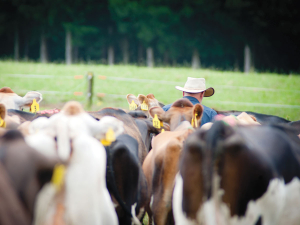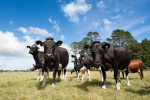DairyNZ solutions and development specialist Odette Chauncy summarises the industry evidence behind different types of semen, so you can know what to expect before you give it a shot.
Are you exploring different semen types this year? Curious to know what conception rates or gestation lengths to expect? At DairyNZ, we share the same curiosity and have been investigating the research behind different semen types.
If you are considering using liquid fresh sexed semen, New Zealand research indicates you can expect around a 5% decrease in conception rate when compared to your conventional semen results. However, some research has shown a 10% difference in conception rate; speak to your breeding company if you are experiencing differences greater than this. The conception rate is lower when using frozen semen – fresh is best when using sexed semen. Also, you can expect around 10% of calves sired by sexed semen to be males.
Heifer replacement calf cohorts can form more quickly due to condensed calving spread, potentially allowing calves to leave the calf shed earlier. Some other benefits include that you can select your high- Breeding Worth cows for your heifer replacements, and you can increase the total remaining cows available to be mated to different semen types and breeds, such as beef.
If you’re thinking about using beef-bred semen, we recommend selecting proven sires that produce, on average, calves with lower birth weights, shorter gestation lengths than other sires from the same breed, and faster growth rates. This is because lighter birth weights and improved calving ease have been associated with shorter gestation lengths in cattle, and heavier weaning weights of progeny sired by proven bulls. It is important to keep in mind that other factors also contribute to calving ease.
Gestation length has a moderately high heritability and variation between sires, breeds and calf gender. Beef breeds typically have a longer gestation length than dairy breeds of 281-282 days, while short gestation length can reduce gestation length by 8-10 days. When using a shortgestation- length beef-bred semen, it can be a similar gestation length to conventional dairy-bred semen.
New Zealand research has proven within-breed sire variation for birthweights and gestation length traits, so selecting the correct sire is important. Proven beef sires can have a shorter gestation length; for example, progeny sired by Angus bulls with the top 10% gestation length estimated Breeding Value were born with an average gestation length of 279 days.
Consider your options when trying new semen technologies. We suggest starting at a small scale to gain experience before you fully commit. Reach out to your breeding company to learn more about what results you can expect from different semen types.
Article kindly supplied by DairyNZ – previously published in Inside Dairy


















